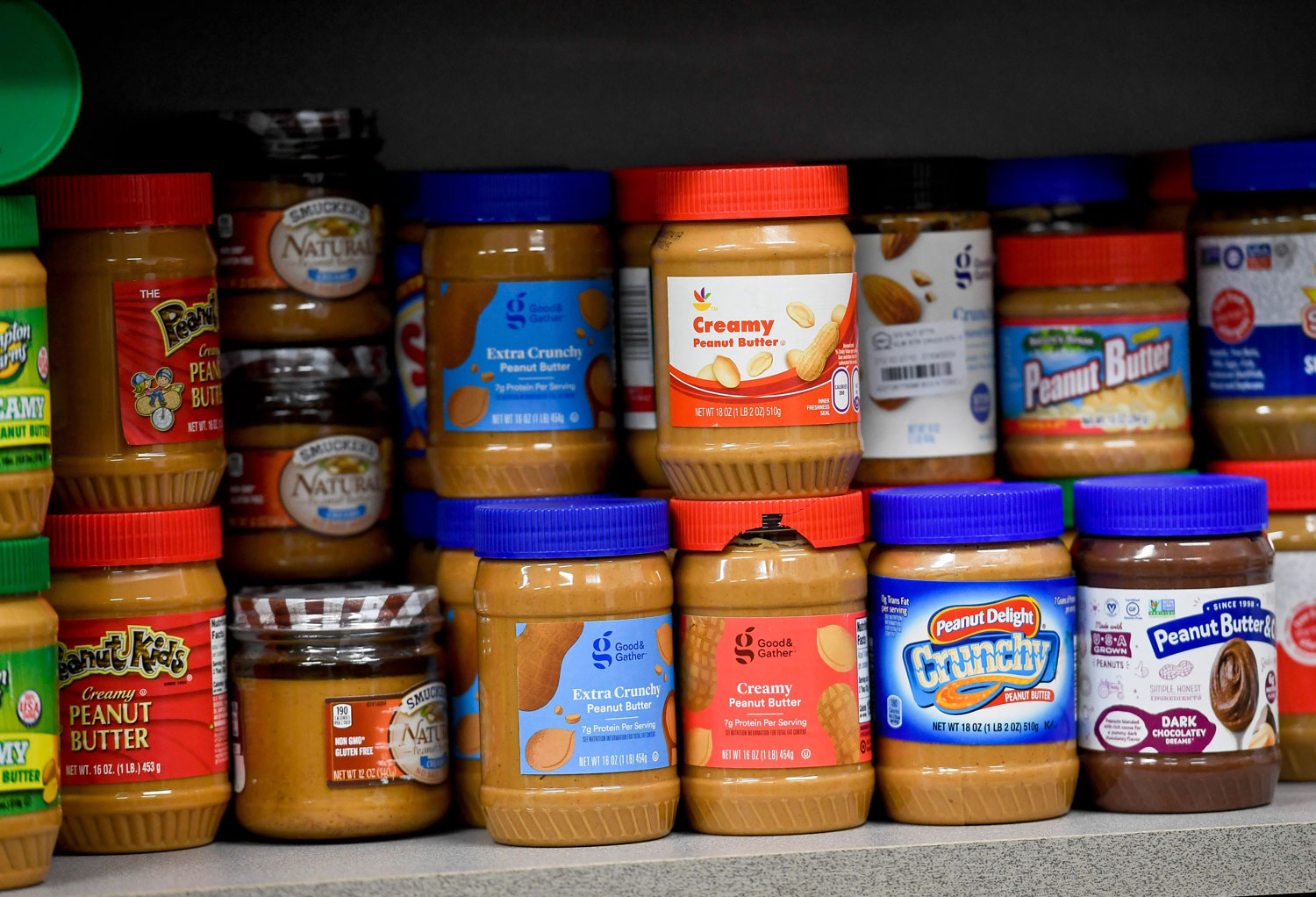Peanut butter: “the pâté of childhood,” Florence Fabricant once wrote.
Sure thing — but it’s pretty damn popular amongst adults, too. Americans eat an estimated 400,000 tons of it a year, four times the most peanut butter-obsessed European countries. And though places like China and India dwarf America’s annual peanut harvest, we still manage to consume more peanut butter than any nation in the world.
It’s a firmly American tradition, with roots that go much further back than the modern NBA’s “secret addiction,” or our collective nostalgia for elementary school lunches; during World War I, peanut butter was popularized as a foodstuff alternative on “meatless Mondays,” with the country rationing in kind.
Anytime an ingredient gets this lodged in the casual monoculture, it becomes extremely easy to buy the same jar of whatever your preferred brand is, year after year, without really thinking about it. You may or may not eat the same peanut butter that was in your childhood kitchen. Which is fine — assuming you like the taste and it leaves you feeling energized.
Should you choose to make a switch, though, you might be surprised to find that peanut butter now takes up at least half an aisle at the grocery store, with a smattering of labels claiming organic status, or arriving in powder form, or cracking jokes about its founder’s origins. A good chunk of that shelf might not be peanut butter at all. Wait…should you have moved over to almond butter by now?
If nothing else in this world, peanut butter should be easy to understand and enjoyable. Here’s what you need to know in order to A) pick a better peanut butter, and B) not lose your love of the product (or your mind) along the way.
If Your Mental Health’s Suffering, Try Cleaning Up Your Gut
The mind-microbiome connection is now indisputableRead the ingredients
Despite the fact that it’s American and can sit in a pantry for a long time, peanut butter is not a complex concoction. All it needs to have is peanuts. It can — and often does have — palm oil, salt, added sugars, or emulsifiers. The palm oil is intended for spreadability, the salt and sugar for taste, and anything else to lengthen the shelf-life and/or round out the product. (Some peanut butter manufacturers like to remove fat, so they can label the product “reduced fat.” They then replace the natural fat with nonsense.) Suffice to say: peanut butter should contain peanuts and salt at most.
Don’t stress the fat
We reviewed that French health app Yuka last week, and we’re fans. If there’s one area where its rating system misses the mark, it’s in its propensity for calorie-counting. According to Yuka, peanut butter could be healthier because it’s a high-calorie, high-fat food. Too filling.
But that’s sort of the point of peanut butter, isn’t it? That’s why long-distance thru-hikers bring jars with them on the Appalachian Trail. (Or, for a less metal example, why we like to put a scoop in a shake after the gym.) There’s nothing wrong with fueling up on healthy fats. In fact, it’s a great habit to get into. Two tablespoons of a good, honest peanut butter will be somewhere in the realm of 200 calories and 20% of your daily fat intake. That’s a fantastic start to the day, especially when paired with fresh fruits and a grainy bread.
Only almond if you want/have to
Don’t stress the old crunchy versus creamy debate (there are some minor nutritional differences, but it’s basically irrelevant) and don’t stress the peanut versus almond versus cashew debate, either. Because the alternative nut butters “dropped” more recently, we tend to view them as healthier options. It’s overblown — almond butter, for instance, might have more minerals and fiber, but peanut butter has more protein. At the end of the day, they’re super similar; you should only feel forced to make a definitive decision if you have an allergy or extraneous dietary concern. Otherwise, mix and match and feel free to sample all sorts of butters: hemp, pumpkin, sunflower, flaxseed, etc.
The single-use issue
This is an issue we wish more peanut butter brands gave more credence to, considering how many of them advertise environmental side quests. While peanut butter jars may not be “single-use” by the literal definition, most of them don’t see more than four or five uses before they’re chucked in the bin…and we’ve covered the myth of plastic recycling in the past. Glass can be recycled endlessly, though. Kudos to the brands distributing their peanut butter in glass jars.
Our pick
Taking all of the above into account, we feel confident in recommending Fix & Fogg’s Super Crunchy Peanut Butter. It delivers on literally everything outlined above, is comparably priced to every other peanut butter on the market (no more than $2 more expensive than the high-processed crap), and even sources Hi Oleic peanuts, which are high in monounsaturated fats, stay fresher for longer, and maintain cult status amongst growers.
Whether you’re looking to get into shape, or just get out of a funk, The Charge has got you covered. Sign up for our new wellness newsletter today.
